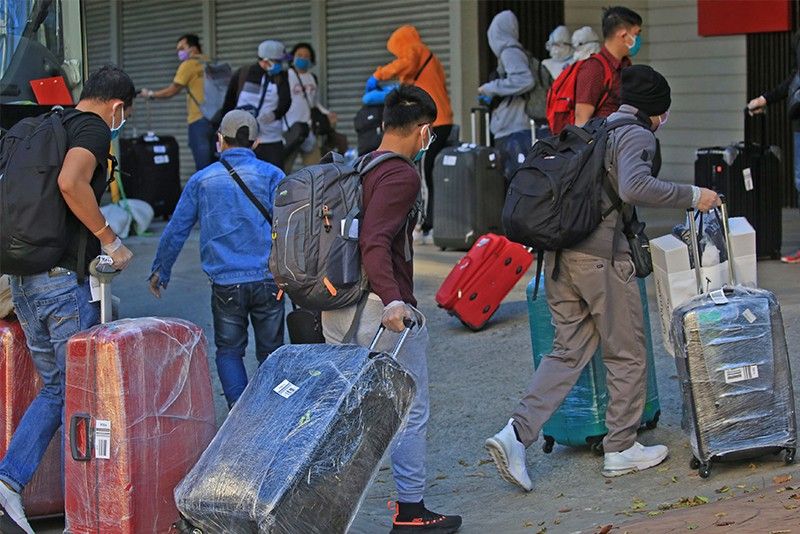Cash remittances post slower growth in February due to Omicron, weak peso

MANILA, Philippines — Money sent home by Filipinos overseas grew at a slower pace in February due in part to pandemic curbs reimposed back then and a weak peso.
What’s new
Cash remittances coursed through banks rose 1.3% year-on-year in February to $2.51 billion, the Bangko Sentral ng Pilipinas reported Monday. However, this was slower than the 2.5% growth recorded in January, when the Omicron variant started tearing through the globe.
Why this matters
Remittances are considered pillars of economic strength for the Philippines' consumption-driven economy, as money sent home by migrant Filipinos helps increase the spending capacity of their families here.
Likewise, remittances are also crucial sources of dollars for the country. In 2021, remittances amounted to $31.42 billion, expanding 5.1% compared to the 2020 haul. The collections slightly missed the BSP's forecast of 6% growth, but BSP Governor Benjamin Diokno said he hopes remittances would rise this year.
For 2022, the BSP forecasts cash remittances to grow 4% year-on-year.
What analysts say
Sought for comment, Jeremiah Opiniano, professor at the University of Santo Tomas and executive director at the Institute for Migration and Development Issues, said: "If February cash remittances were smaller, that might be because the monies were wired during the Christmas season and February becomes a 'non-occasion month' that may not necessarily warrant more cash being sent."
But Opiniano expects more overseas Filipinos to send larger remittances to their families here, since the economic impact of Russia's invasion of Ukraine will inevitably raise inflation rates across Asia. "But it remains to be seen how far this Russian invasion and its economic impacts worldwide can go," Opininiano added.
For Nicholas Antonio Mapa, senior economist at ING Bank in Manila, the slower uptick of remittances in February were due in part to the peso's depreciation.
"Slowdown in remittance gains likely attributed to exchange rate nuances. A weaker peso allows overseas Filipino to send home a smaller amount of dollar to cover PHP expenses," Mapa said in a Viber message.
"We can still however expect remittances to expand this year but it's becoming more apparent that structural flows such as these will not be able to offset the widening trade gap. Expect pressure on PHP to continue," Mapa added.
Other figures
- The BSP said 41.6% of cash remittances in February came from the United States, while the rest came from Singapore, Saudi Arabia, Japan, the United Kingdom, the United Arab Emirates, Canada, Taiwan, Qatar, and Malaysia.
- Remittance from land-based workers inched up by 1.2% year-on-year to $2.007 billion in February. Sea-based workers brought in a total of $501 million, which expanded by 1.6% year-on-year.
- Latest
- Trending
























